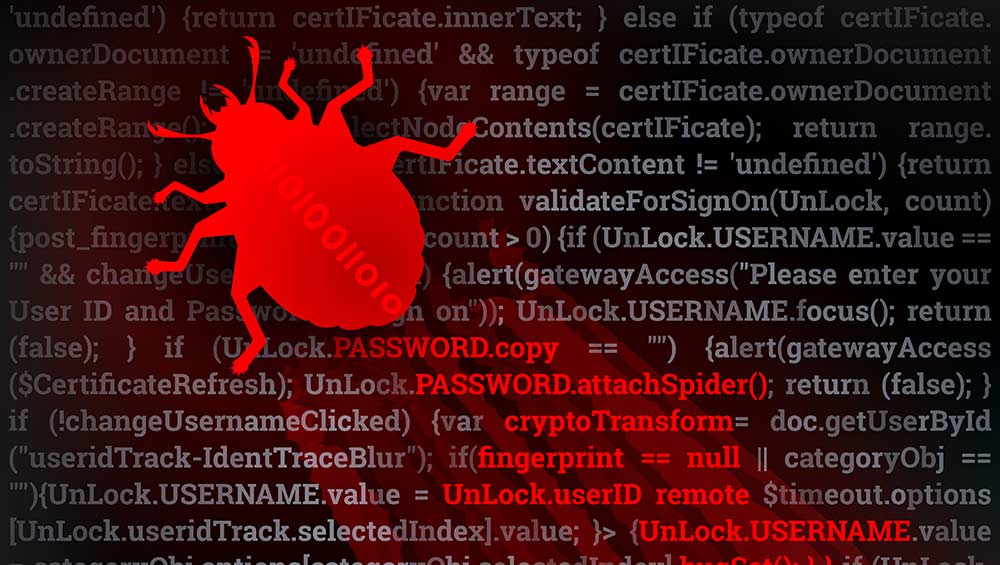Qbot malware surges into the top-ten most common business threats
An evolved form of the banking Trojan was distributed by number one-ranking Emotet in a campaign that hit 5% of businesses globally


An evolved form of the Qbot malware entered the top-ten index of the most prevalent security threats for the first time last month, with the banking Trojan ranking as the tenth most pertinent risk.
The Trojan has undergone several changes since it was first active in 2008, with researchers most recently discovering in June that hackers have bolstered Qbot with new functions and stealth capabilities.
Its prevalence has, as a result, surged to see it enter the Check Point Research top-ten malware index for the first time, with the company discovering several campaigns using Qbot’s new strain between March and August 2020.
The top 12 password-cracking techniques used by hackers Open source vulnerabilities more than doubled in 2019 The most popular ransomware strains targeting UK businesses
These campaigns include Qbot being distributed by the Emotet Trojan, which itself ranked as the number one most prevalent threat to businesses during August. The campaign alone affected 5% of organisations globally in July.
"Threat actors are always looking at ways to update existing, proven forms of malware and they have clearly been investing heavily in Qbot’s development to enable data theft on a massive scale from organizations and individuals," said director for threat intelligence and research products at Check Point, Maya Horowitz.
"We have seen active malspam campaigns distributing Qbot directly, as well as the use of third-party infection infrastructures like Emotet's to spread the threat even further," she added. "Businesses should look at deploying anti-malware solutions that can prevent such content reaching end-users and advise employees to be cautious when opening emails, even when they appear to be from a trusted source."
While Qbot represents a more pertinent threat than ever before, Emotet remains at the summit of the index for the second month in a row, with the advanced and self-propagating Trojan affecting 14% of organisations globally.
Sign up today and you will receive a free copy of our Future Focus 2025 report - the leading guidance on AI, cybersecurity and other IT challenges as per 700+ senior executives
Once a fully-fledged banking Trojan, Emotet has most recently been used as a distributor of other malware strains, recently, for example, in the campaign in which it spread Qbot. Emotet uses multiple methods to stay persistent and deploys evasion techniques to avoid detection. This threat is also commonly spread through phishing campaigns.
RELATED RESOURCE

Don’t just educate: Create cyber-safe behaviour
Designing effective security awareness and training programmes
The threats that followed Emotet include Agent Tesla, an advanced RAT functioning as a keylogger and information stealer, as well as Formbook, an information stealer that harvests credentials from web browsers, collects screenshots, and monitors keystrokes. Both malware types affected 3% of organisations each during August.
Check Point Research also published information about the most commonly exploited threats during August, as part of its indexing, with the web server exposed git repository information disclosure ranking number one, and affecting 47% of organisations globally. This information disclosure vulnerability could be successfully exploited to allow the unintentional disclosure of user account information.
This exploit was followed by the MVPower DVR remote code execution flaw, exploited to execute arbitrary code in affected routers, as well as the Dason GPON router authentication bypass, which can allow remote attackers to obtain sensitive information.

Keumars Afifi-Sabet is a writer and editor that specialises in public sector, cyber security, and cloud computing. He first joined ITPro as a staff writer in April 2018 and eventually became its Features Editor. Although a regular contributor to other tech sites in the past, these days you will find Keumars on LiveScience, where he runs its Technology section.
-
 Google is scrapping its dark web report feature
Google is scrapping its dark web report featureNews Google said while the dark web report feature offered “general information”, the tool didn’t provide “helpful next steps” for users potentially impacted by a breach.
-
 AI means you're probably going to need bigger developer teams
AI means you're probably going to need bigger developer teamsAnalysis Software developers may be forgiven for worrying about their jobs in 2025, but the end result of AI adoption will probably be larger teams, not an onslaught of job cuts.
-
 CronRat Magecart malware uses 31st February date to remain undetected
CronRat Magecart malware uses 31st February date to remain undetectedNews The malware allows for server-side payment skimming that bypasses browser security
-
 Mekotio trojan continues to spread despite its operators’ arrests
Mekotio trojan continues to spread despite its operators’ arrestsNews Hackers have used it in 100 more attacks since arrests
-
 “Trojan Source” hides flaws in source code from humans
“Trojan Source” hides flaws in source code from humansNews Organizations urged to take action to combat the new threat that could result in SolarWinds-style attacks
-
 What is Emotet?
What is Emotet?In-depth A deep dive into one of the most infamous and prolific strains of malware
-
 Fake AnyDesk Google ads deliver malware
Fake AnyDesk Google ads deliver malwareNews Malware pushed through Google search results
-
 Hackers use open source Microsoft dev platform to deliver trojans
Hackers use open source Microsoft dev platform to deliver trojansNews Microsoft's Build Engine is being used to deploy Remcos password-stealing malware
-
 Android users told to be on high alert after Cerberus banking Trojan leaks to the dark web
Android users told to be on high alert after Cerberus banking Trojan leaks to the dark webNews The source code for the authenticator-breaking malware is available for free on underground forums
-
 BlackRock banking Trojan targets Android apps
BlackRock banking Trojan targets Android appsNews Trojan steals login credentials and credit card information and has targeted more than 300 apps